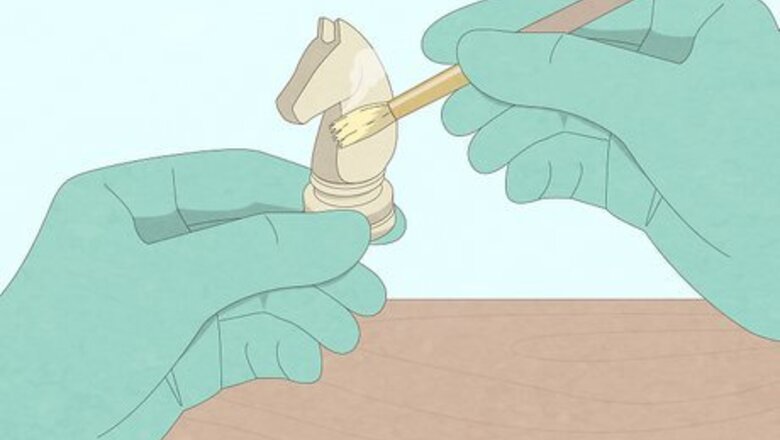
views
Brushing and Rubbing Ivory
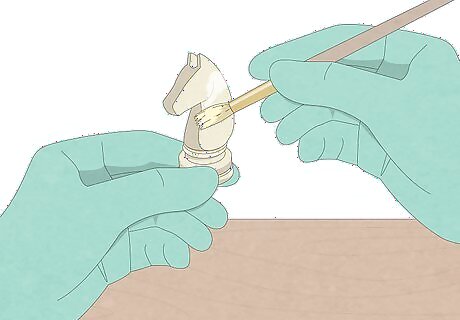
Dust ivory using a paintbrush. Start off cleaning your ivory by brushing with a paintbrush, which is the most delicate method. Be sure to use a soft, clean paintbrush, and to work in one direction so that you don’t spread dirt or impurities around the surface of the object. Before handling ivory, wear clean, white cloth gloves. Without gloves, the oil from your fingers can transfer to the ivory and affect its coloring. Brushing ivory works especially well if you are trying to remove a small amount of dirt or impurities. Work the bristles of the paintbrush into any crevices on the object to remove dirt Any soft bristle brush or duster will work for this. However, don't dust porous ivory or ivory that is cracking, as this may damage it or make the damage worse.
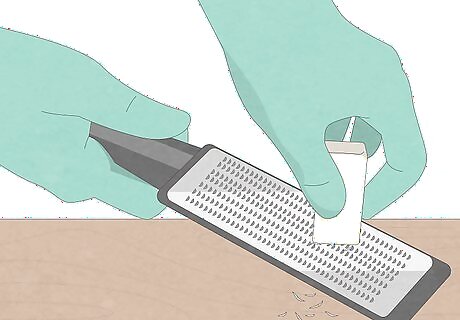
Grate a white vinyl eraser. If you are trying to remove a significant amount of dirt, you may need to use more than just a brush. A white vinyl eraser is a very effective tool for cleaning ivory. Use a zester or grater to grate down the eraser into small shavings. Make sure that the vinyl eraser is white. An eraser of any other color could contaminate and discolor the ivory.
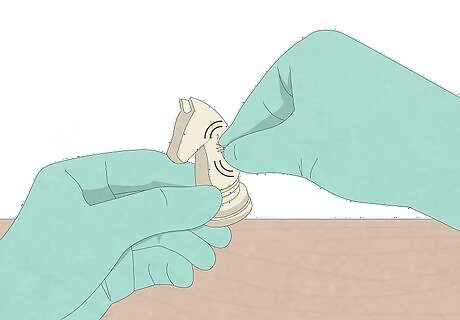
Rub the eraser shavings on the ivory. Wearing your gloves, gently rub the grated eraser over the dirty areas of the ivory. Use your gloved fingertip or a soft brush to work the eraser shavings against the ivory. Using eraser shavings is gentler than using a whole eraser, and it is easier to work into the nooks of an object. You can also use a non-grated white vinyl eraser to clean ivory, just be sure to be very gentle.
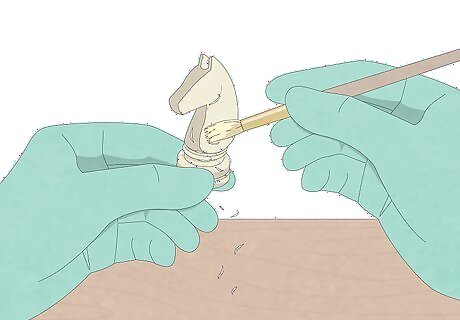
Remove eraser debris with a brush. After you use the white vinyl eraser, you should notice that most or all of the dirt has been removed, but that the eraser shavings may still be covering the object. To remove them, brush the ivory object with a clean soft brush until the shavings have come off.

Rub the ivory with Groom stick. Groomstick is a museum-standard conservation product that is highly effective in cleaning ivory and other precious materials. To use it, pull off a small piece of the Groomstick from the stick and rub it against the surface of the ivory. You should see that any dirt sticks to the Groomstick. Groomstick is made of a non-abrasive rubber that pulls off dirt from the surface of an object. It doesn’t leave debris, so you don’t have to brush off the ivory after using it.
Cleaning With Mild Soap
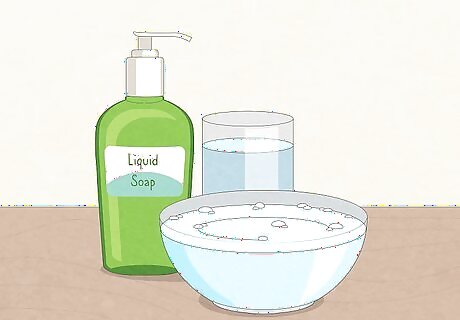
Combine water and mild soap. If brushing the ivory and cleaning with an eraser don’t work to clean the ivory, you will need to do a deeper clean with soap and water. In a small bowl, pour in a few tablespoons of water. Then add in a squirt of mild soap and stir to mix the soap and water together.

Dab the soap solution on a small section of the ivory. Dip a cotton ball swab or a Q-tip in the soapy water, then squeeze out any excess liquid and blot with a paper towel. Gently rub a small section of the ivory with the cotton ball or Q-tip. Don’t make the ivory too wet; try to just barely dampen the surface. You should notice that the section of ivory you cleaned looks whiter. Use a Q-tip if you are working on small, delicate object or one that has a lot of intricate carving. Use a cotton ball if you are working on a large, smooth object.
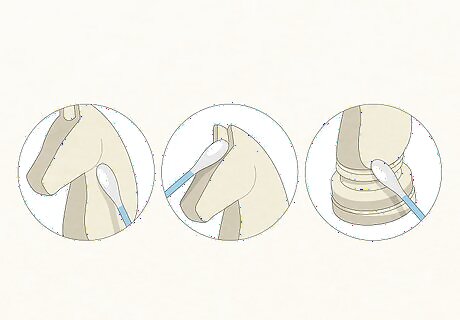
Clean the ivory section by section. Keep dabbing the ivory with the Q-tip or cotton ball, working on small sections of the ivory at a time. If the Q-tip or cotton ball you are using ever becomes noticeably dirty, throw it away and use a new one. Be sure not to cover the ivory with excess moisture. By the time you move on to the next section of ivory, the section that you just cleaned should be dry. If it is still wet, dry it with a clean cloth. If your ivory object is cracked, make sure not to apply water above the fissured or porous surfaces. Never soak a piece of ivory, as soaking can weaken and compromise the material by causing cracks and swelling.
Dry the ivory. If you have cleaned correctly, the ivory object should look considerably cleaner and be dry. Before putting away the object, wipe it down with a clean, non-abrasive white cloth to be sure to soak up any excess moisture from the cleaning.
Cleaning With an Ethyl Alcohol Solution

Combine ethyl alcohol and water. If dirt and other impurities are still ingrained in your ivory, you will need to clean your object with an ethyl alcohol solution. To create the solution, combine equal parts water and ethyl alcohol in a small bowl and stir to mix. Keep in mind that this is the most aggressive cleaning method, and should only be used on ivory that does not have any fissures or cracks.

Dip a Q-tip or cotton ball into the solution. After you make the ethyl alcohol solution, dip a Q-tip or a cotton ball into the liquid. Squeeze out any excess, then use a paper towel to blot the Q-tip or cotton ball.

Test clean a small area. Ethyl alcohol is a potent cleaner, so you want to be sure to test clean an area of the object before using it on the entire object. Pick out an inconspicuous section of the ivory, then gently rub the ivory with the cotton ball or Q-tip. Dry the area with a small cloth. If there is no discoloration, you will know that the ethyl alcohol solution is safe to use.

Use the ethyl alcohol solution section by section. If the spot test went well, clean the ivory object section by section by rubbing the barely-dampened Q-tip or cotton ball on the surface of the ivory. Make sure to dry every section if necessary before moving on to the next one. Work in small patches until you have cleaned the entire object.
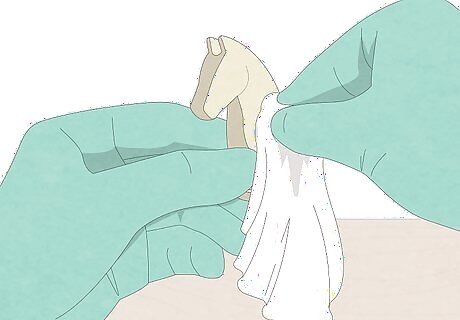
Dry the ivory with a clean cloth. Once you are done cleaning the object, wipe it down with a clean, white cloth. This will soak up any excess moisture that could damage the surface of the ivory.




















Comments
0 comment